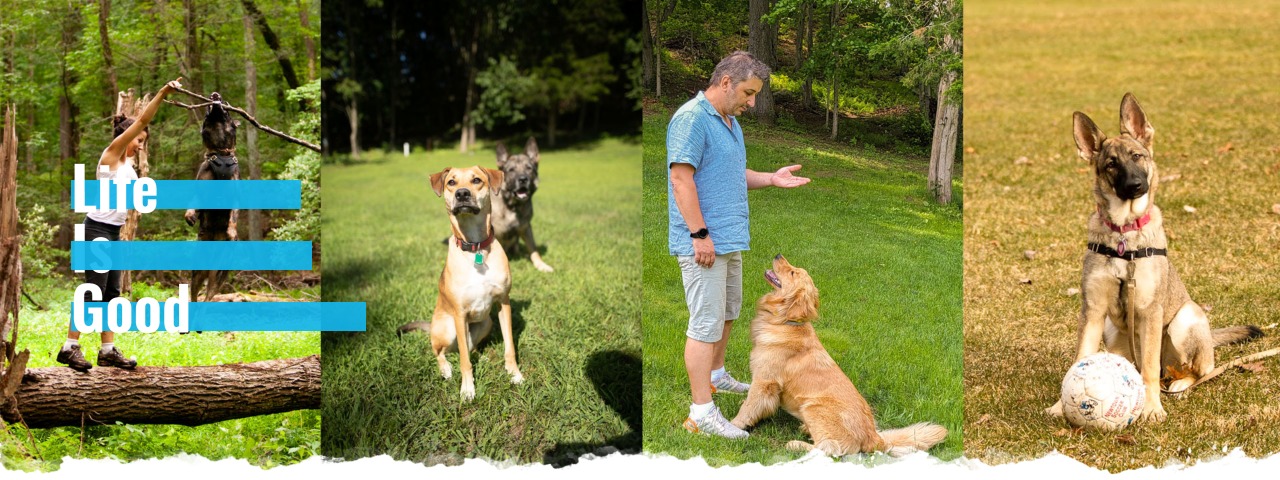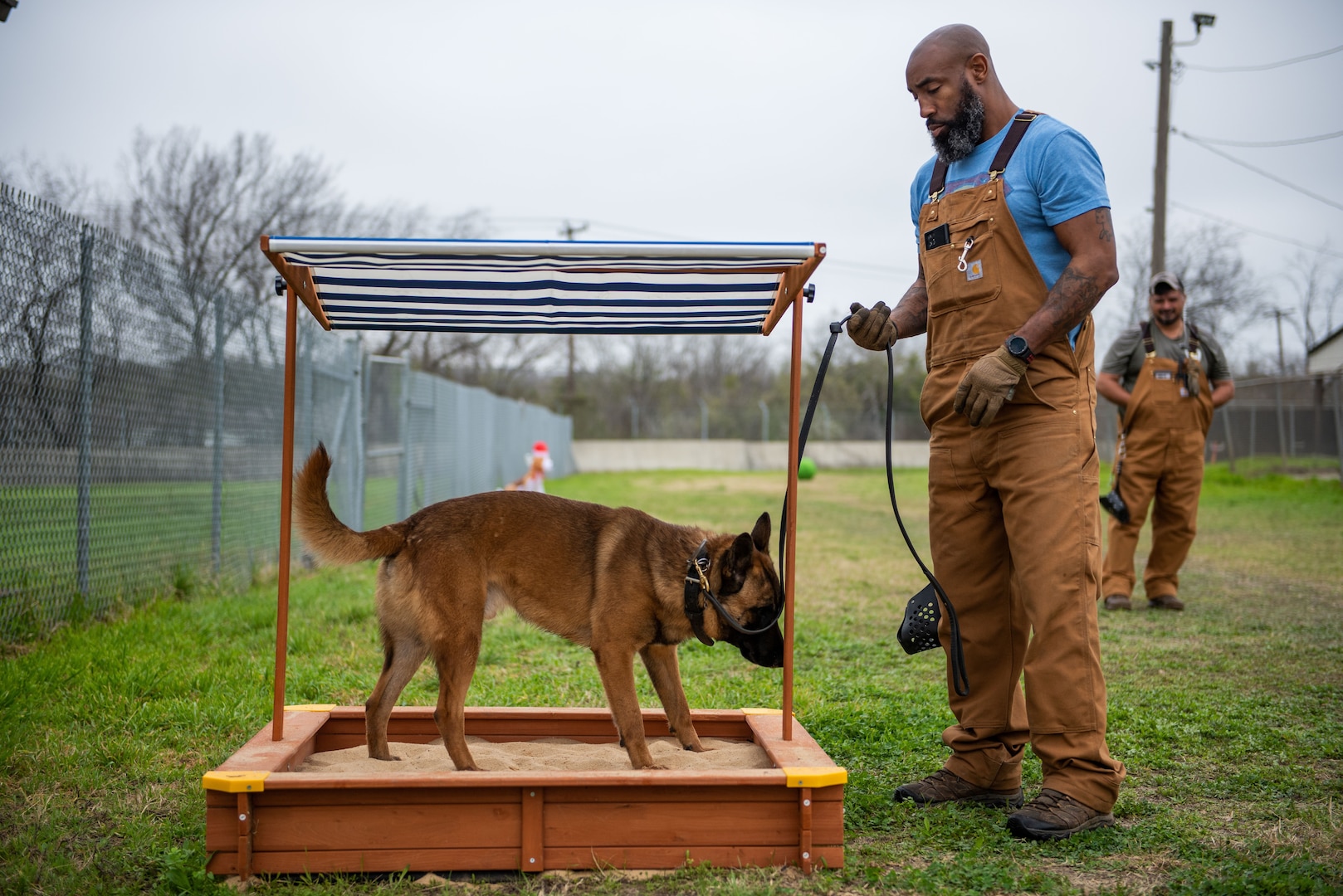Dog Training For Dogs: Practical Solutions for Common Dog Issues
Dog Training For Dogs: Practical Solutions for Common Dog Issues
Blog Article
Important Pet Educating Tips for Raising a Mannerly Companion
Crucial techniques such as early socialization, the facility of regular commands, and the application of positive support can significantly influence a dog's behavior and general disposition. Understanding canine habits is important for customizing training methods that resonate with individual pet dogs.
Recognizing Dog Habits

Furthermore, socialization plays a crucial function in forming a dog's actions. Direct exposure to numerous atmospheres, individuals, and various other animals aids pet dogs develop confidence and reduces the probability of fear-based responses. Early socialization is especially crucial, as experiences throughout the vital advancement duration considerably influence a pet's lasting actions.
Furthermore, comprehending the concepts of finding out concept-- such as favorable reinforcement, unfavorable support, and penalty-- can enhance training efficiency. Pet dogs are most likely to repeat actions that generate favorable end results. Utilizing regular, reward-based training approaches cultivates a trusting relationship in between the canine and its instructor.

Basic Commands to Teach
Educating fundamental commands is an essential structure for reliable dog training and communication. Dog Training For Dogs. These commands not just help develop a clear line of communication between you and your pet dog, but they also promote security and etiquette in various situations
Beginning with fundamental commands such as "Sit," "Keep," "Come," "Down," and "Heel." Each command serves a specific objective; for instance, "Sit" can assist soothe an ecstatic dog, while "Come" is vital for guaranteeing your pet dog returns to you when called.
When introducing a brand-new command, utilize a clear and consistent tone. Always pair the verbal command with a hand signal to reinforce understanding. Practice in a silent setting before progressively presenting disturbances. Gradually enhance the duration and distance as your dog comes to be a lot more proficient.
Uniformity is crucial; technique commands everyday to enhance knowing, and make sure all relative use the same commands to avoid confusion. Keep in mind that persistence is required during this process, as various pets may find out at different rates. Developing these standard commands advertises a harmonious connection and establishes the stage for advanced training in the future.
Favorable Reinforcement Methods
Positive support techniques are extremely effective techniques for motivating wanted actions in canines. This training strategy involves gratifying your canine for exhibiting habits you wish to enhance, consequently boosting the possibility of those behaviors being duplicated. Rewards can take different types, including deals with, appreciation, or play, and ought to be customized to what encourages your canine most.
Timing is critical in favorable support. Benefits should be offered immediately after the wanted behavior strikes create a clear association. If you desire your canine to rest on command, compensate them as quickly as they sit, ensuring they understand what activity is being reinforced.
Uniformity is an additional important element. Dog Training For Dogs. Use the same commands and rewards each time to avoid complication. Gradually, you can phase out treats for more intermittent rewards, such as verbal praise, to keep the actions without relying upon constant external support
In addition, it is important to continue to be patient and avoid penalty, as unfavorable reinforcement can lead to be afraid and stress and anxiety, inevitably impeding training initiatives. By implementing positive support strategies, you will cultivate a trusting connection with your pet dog, resulting in a well-behaved buddy.
Socialization and Interaction
Socialization and communication are essential elements of a canine's development that complement favorable support methods. Very early direct exposure to diverse atmospheres, individuals, and other pets is important for promoting a well-adjusted pet dog. This process assists canines establish self-confidence and versatility, reducing the probability of behavior concerns such as anxiety or hostility.
Begin socialization throughout the essential developing window, commonly in between three and fourteen weeks old. Present your puppy to different stimulations, consisting of various audios, sights, and textures. Enroll in pup classes or prepare monitored playdates with other pets to urge positive interactions.
As canines expand, proceed to expose them to different experiences. Tasks such as sees useful reference to parks, pet-friendly stores, or neighborhood events can boost their social skills and comfort levels in strange settings.
Always monitor communications to ensure they are favorable and trouble-free. Smoothly reroute them and enable for gradual direct exposure at a comfortable rate if your canine shows signs of anxiousness or hostility. Through regular socializing and communication, you lay the groundwork for a balanced, mannerly buddy qualified of prospering in varied social situations.
Consistency in Training
Developing uniformity in training is important for efficient interaction in between a dog and its proprietor. Pet dogs thrive on routine and clear expectations, which aids them comprehend what behavior is preferred. A regular strategy includes using the same commands, hand signals, and incentives for particular behaviors. This uniformity decreases complication, allowing the pet dog to get more information effectively.
Uniformity additionally expands past commands; it includes the rules established within the house. If a canine is not permitted on the furniture, this guideline should be applied at all times. Blended signals can result in behavior concerns, as the pet dog might end up being uncertain concerning what is acceptable.
Furthermore, all member of the family must be on the same page relating to training methods and commands. The pet dog may end up being disoriented and anxious. if one individual compensates an actions while an additional scoldings it.
Final Thought
In conclusion, implementing essential pet dog training suggestions cultivates a mannerly buddy. Early socializing, consistent commands, and her comment is here positive reinforcement are essential parts that add to reliable training. Developing clear communication and preserving a routine boosts the canine's understanding of assumptions, while perseverance ensures lasting success. Inevitably, these methods cultivate a trusting partnership between the canine and its family, promoting a harmonious living setting and a well-adjusted canine buddy (Dog Training For Dogs).
Important methods such as early socializing, the facility of consistent commands, and the implementation of favorable support can dramatically influence a dog's habits and general disposition. Comprehending his response canine behavior is essential for tailoring training techniques that reverberate with individual dogs.Understanding canine habits is necessary for reliable pet dog training. Canines are a lot more most likely to repeat actions that produce positive results.Positive support strategies are very efficient techniques for encouraging wanted behaviors in canines.
Report this page